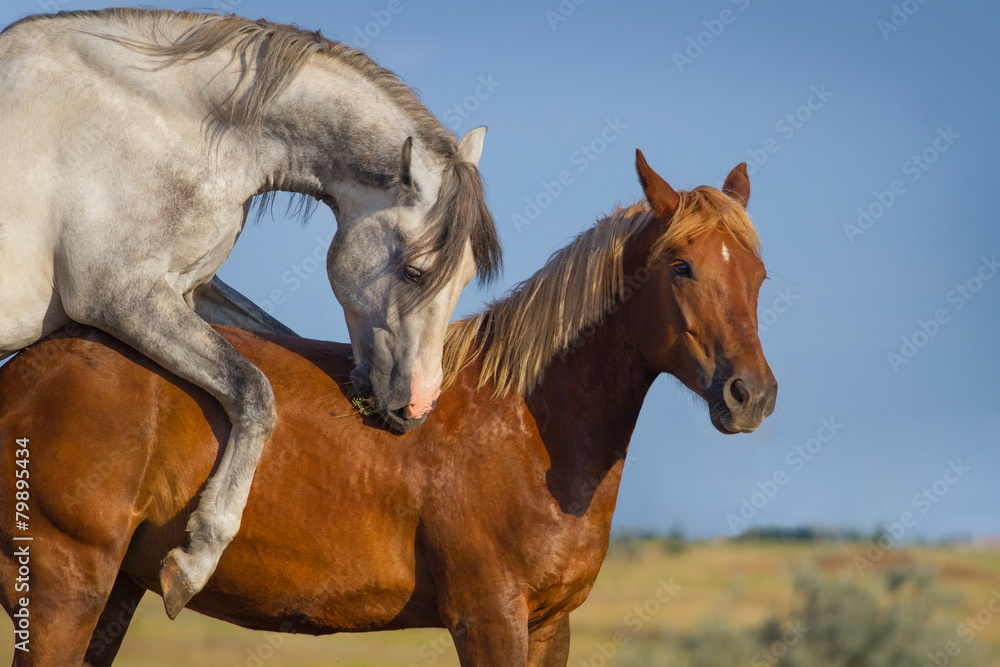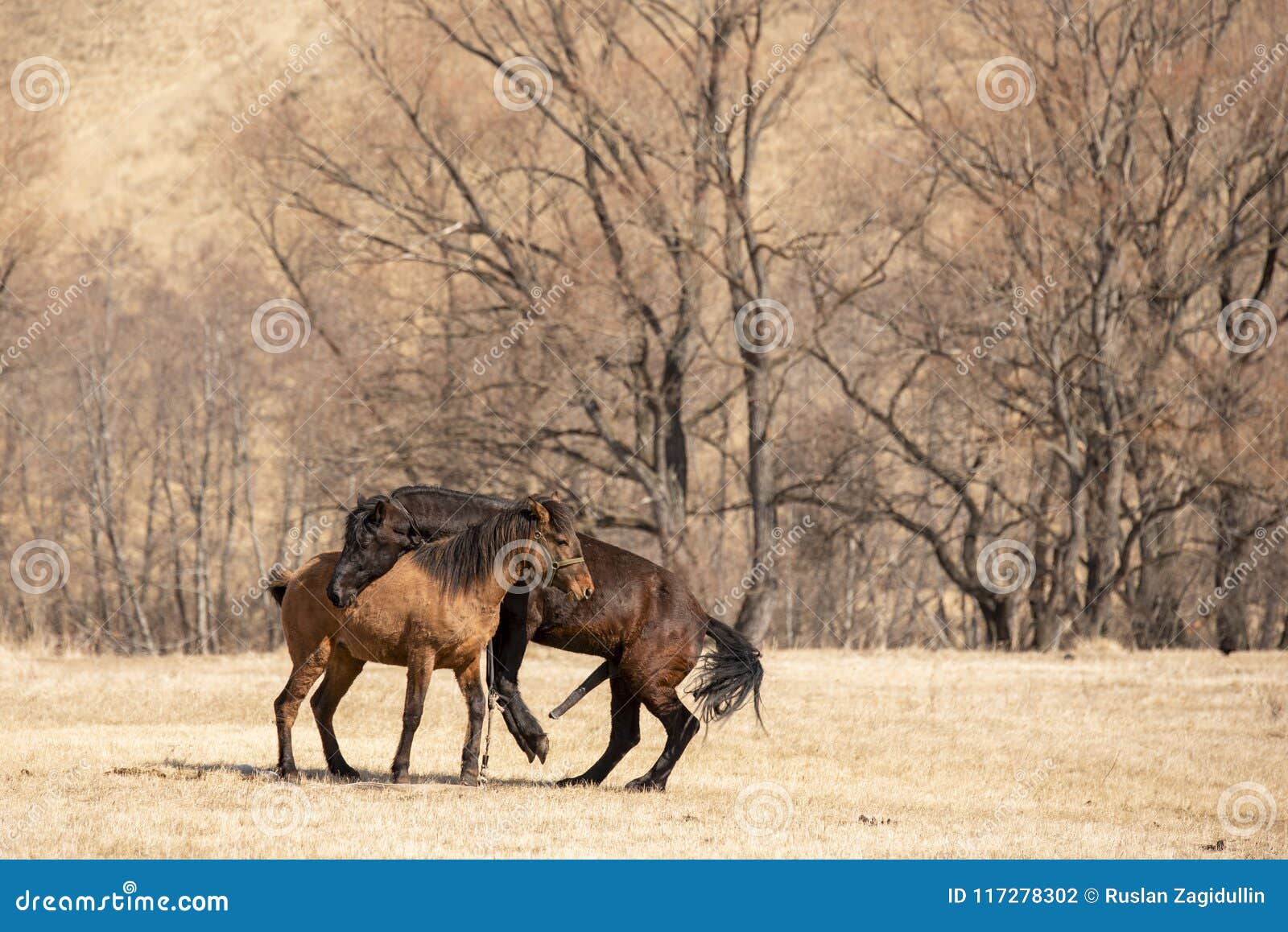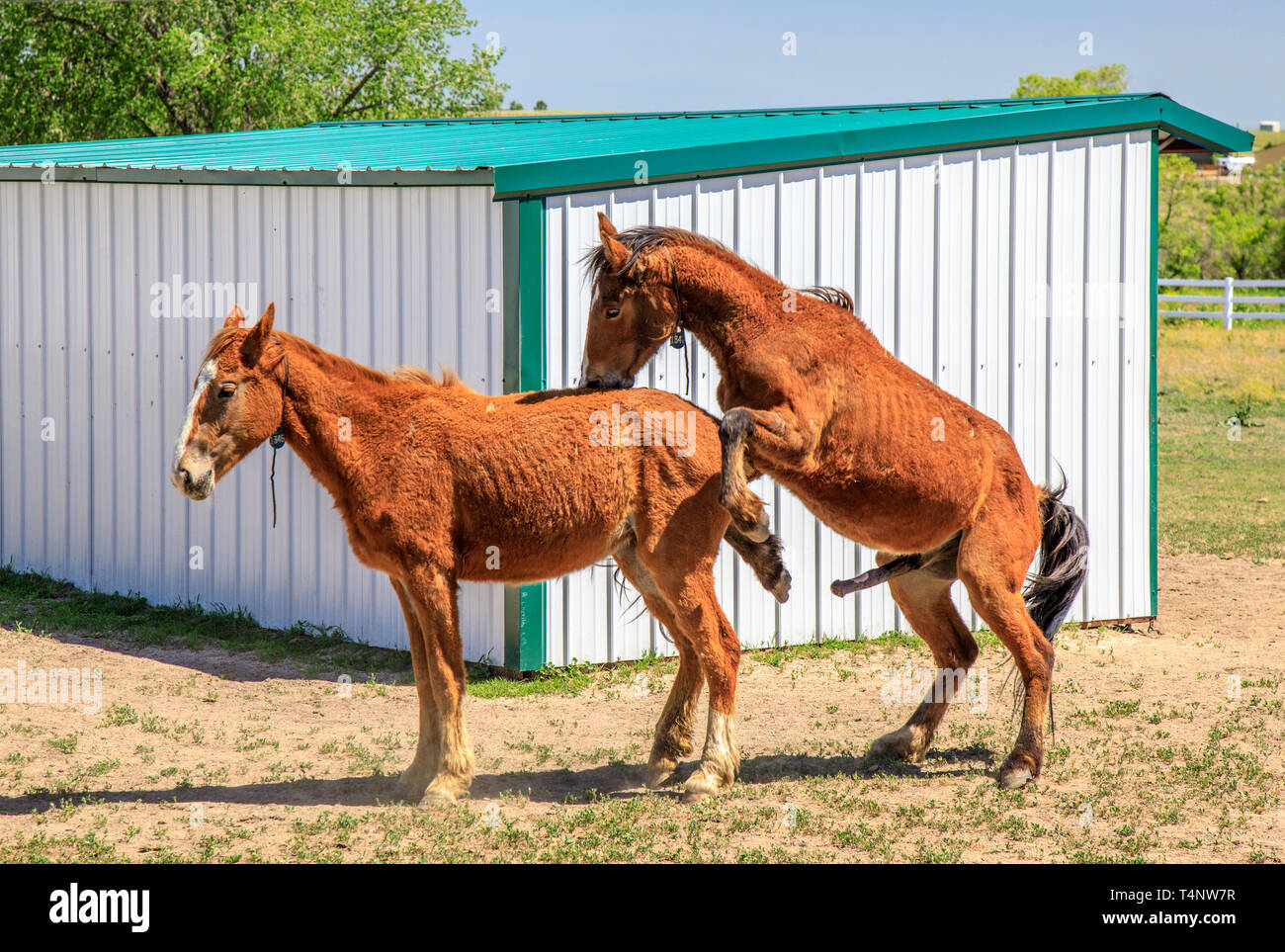Horse Mating - A Look At Equine Reproduction
Have you ever wondered about the fascinating ways horses come together to create new life? It's a truly amazing part of nature, full of instincts, careful timing, and, in some respects, a bit of playful interaction. Getting a sense of this natural process is, like your, a big piece of understanding these wonderful creatures we share our lives with.
From the subtle nudges and gentle sounds they make to the more obvious displays of readiness, horses have a whole way of communicating their interest. It’s a process that has been happening for thousands of years, guided by what feels right for them. Knowing about these natural signals can give us a much better appreciation for what happens when mares and stallions get together.
For anyone who cares for horses, or just finds them interesting, looking into how they reproduce is a truly captivating subject. It helps us see the world through their eyes a little more, and for those who work with horses, it gives a good foundation for helping them live well. So, let’s take a closer look at this very natural part of horse life, shall we?
Table of Contents
- What is Horse Mating, Anyway?
- How Do Horses Show They're Ready for Horse Mating?
- The Parts That Help with Horse Mating
- What Happens During Horse Mating?
- The Mare's Special Time for Horse Mating
- How Can People Help with Horse Mating?
- Looking After Horses Before and After Horse Mating
- The Natural Side of Horse Mating
What is Horse Mating, Anyway?
Horse mating, or what many call horse breeding, is the natural way these amazing animals make new generations. It’s when a male horse, known as a stallion, and a female horse, a mare, come together so they can have little ones. This whole thing is about sexual reproduction, which is how most animals, including people, have babies. It’s a very basic and important part of life for all living things, you know, to keep their kind going.
The process itself is more than just two horses getting together; it involves a series of natural actions and cues. It's a dance, really, of behaviors that help them figure out if the time is right and if they are a good match. This can happen out in the open, where horses live freely, or in places where people look after them. Either way, the core instincts are pretty much the same, and that’s pretty cool.
For those who are really into horses, like people who breed them or just love learning about them, getting to know how this all works is a big deal. It helps them understand the animals better and, in the case of breeders, helps them make good choices for the horses they care for. So, this isn't just about biology; it’s also about respect for their natural ways, too it's almost.
- Remoteiot Vpc Ssh Download
- Cheyenne Swenson Nude
- Wwxxcom Reviews
- Securely Connect Remote Iot Vpc Raspberry Pi Aws
- Ww Xx Com
The Basic Idea of Horse Mating
At its heart, horse mating is about a stallion and a mare getting together to reproduce. It's a natural process that has been honed over a very long time, involving a lot of instinct and specific behaviors. The mare has a special cycle, a bit like a human menstrual cycle, where she becomes open to having a stallion near her. This time is often called "in heat," and it's when she's ready to make a baby. This cycle typically lasts for a certain period, and it is that time when things can happen.
The whole thing is built on a sort of natural communication between the horses. They send out signals to each other, some very clear and some more subtle, that tell them if the other horse is interested and ready. This back-and-forth is a big part of what makes the process work well. It's not just a quick thing; there's a build-up, a kind of getting-to-know-you period, in a way.
Understanding these basic steps and the natural ways horses act is a really good first step for anyone wanting to learn about horse reproduction. It helps to see it as a natural, important part of their lives, rather than just a simple action. And, quite frankly, it’s pretty amazing to watch these large, powerful animals engage in such delicate interactions.
How Do Horses Show They're Ready for Horse Mating?
When a mare is ready to breed, she gives off very clear signs. These signs tell a stallion that she is open to his advances. It's like she's putting out a welcome mat, you know? These signals are a mix of what she does with her body and the way she acts. A stallion, on the other hand, will also show his interest with certain behaviors that are pretty easy to spot.
For a mare, you might see her lifting her tail, especially when a stallion is nearby. She might also squirt a little bit of pee, which carries scents that tell the stallion she's ready. Sometimes, she'll even wink her private parts, which is a very clear signal to a male horse. She might also stand very still, almost inviting the stallion to come closer. These are all part of her way of saying, "I'm ready for horse mating," basically.
A stallion, when he notices a mare giving these signs, will usually become very focused. He might stretch his neck out and curl his upper lip in what looks like a funny face, but it helps him smell the mare's readiness more strongly. He might also make soft noises, like little snorts or nickers, and gently touch the mare's neck or sides with his nose. These actions are his way of checking if she's truly open to him, and it's all part of the horse mating dance.
The Courting Dance of Horse Mating
The courtship between horses is a beautiful set of actions, really. It’s not just about physical readiness; it's also about building a connection, a kind of trust, before horse mating can happen. The stallion will often approach the mare with a lot of care, making sure she feels comfortable with him. He might walk around her, sniff her, and generally try to get her attention in a gentle way.
If the mare is truly open, she will usually stay put and accept his presence. She might even lean into his gentle nudges. This period of getting to know each other, or the "courting ritual," is super important. It sets the stage for everything else that will happen. It’s a very natural process, and it shows how horses communicate without words, just through their actions, you know?
The stallion's actions during this time become more direct once he knows the mare is receptive. He might give her soft nudges and little nips on her neck or sides. At the same time, he might make rhythmic snorting sounds or quiet nickering noises. These actions are all about making a bond and figuring out if she's truly ready for the next steps in horse mating. It’s quite a spectacle, actually.
The Parts That Help with Horse Mating
To really get how horses make babies, it helps to know a little bit about their body parts that are involved. Just like people, horses have specific organs that are made for reproduction. These parts work together in a very clever way to allow for new life to begin. Knowing about these parts for both the male and female horse gives us a clearer picture of the whole process.
For the male horse, the stallion, his main job in this process is to provide the male cells needed for reproduction. He has certain body parts that are designed to do this. For the female horse, the mare, her body is made to produce the female cells and then carry the baby until it’s ready to be born. Both sets of parts are very important for horse mating to happen successfully.
Even geldings, which are male horses that have been altered so they can't reproduce, still have some of these parts, but they don't function in the same way for making babies. So, when we talk about horse mating, we're really focusing on stallions and mares and their specific biological setups. It’s pretty straightforward, but also very clever, naturally.
Male and Female Horse Mating Anatomy
Let's look at the basic body parts involved in horse mating. A stallion has a part called the penis, which is used to deliver the male reproductive cells. He also has testes, which are responsible for making these cells. These parts are quite clear to see and are a big part of his ability to reproduce. They are, essentially, what makes him a stallion in terms of breeding.
For a mare, her main reproductive parts are inside her body. She has ovaries, which produce the female cells, and a uterus, which is where a baby horse, or foal, will grow if she becomes pregnant. She also has a birth canal. These parts are all set up to work together during her cycle and, if she gets pregnant, to support the growing foal. It’s a pretty amazing system, really.
Understanding these basic body parts helps us get a grip on the physical side of horse mating. It's not just about behavior; it's also about how their bodies are made to do this very natural thing. Knowing these details helps people who work with horses to understand what's happening on a physical level, which is quite useful for their care, you know.
What Happens During Horse Mating?
The actual act of horse mating happens in a few clear steps, once the courtship is over and both horses are ready. These steps are pretty consistent, whether the horses are out in the wild or being managed by people. It’s a very instinct-driven process, and each step has its own purpose to make sure reproduction can happen. So, what are these steps, you might ask?
First comes the courtship, which we talked about, where they get to know each other and show readiness. After that, if the mare is truly open, the stallion will try to mount her. This is when he gets on her back. Then comes the actual copulation, which is the physical act of breeding. And if that's successful, the mare will then go through gestation, which is when the baby grows inside her. These are the main stages, basically.
Each of these steps is important, and they all flow into one another. It's not just a single event but a whole series of actions that lead to the possibility of a new foal. For anyone watching or managing horses, recognizing these stages helps in understanding the whole picture of horse mating. It's a natural progression, after all.
The Steps of Horse Mating
Let’s break down the actual steps involved in horse mating. After the mare has shown she's receptive and the stallion has approached her, the next step is the mounting. The stallion will put his front legs on the mare's back, getting into position. This is a very clear signal that the breeding is about to happen. He needs to be in the right spot for everything to work out, you know.
Once he's mounted, the actual copulation takes place. This is the moment when the male cells are transferred to the mare. This part of the process is usually quite quick. The stallion will typically thrust a few times, and then he will dismount. It’s a very direct and efficient action, driven by instinct. This quickness is quite typical for many large animals, you know.
If the breeding is successful, the mare then enters the gestation period. This is the time when the new foal develops inside her body. This period lasts for many months, usually around eleven months, but it can vary a little. During this time, the mare's body nourishes the growing baby. So, while the mating act itself is brief, the outcome, the gestation, is a long and very important part of the whole horse mating cycle.
The Mare's Special Time for Horse Mating
A big part of horse mating depends on the mare being in what’s called "heat" or "estrus." This is her special time when her body is ready to make a baby, and she is open to a stallion. Mares go through a regular cycle, somewhat like human women do, where these changes happen. Knowing about this cycle is really important for anyone who wants to understand horse reproduction, or for people who are trying to breed horses, you know.
This cycle usually has a certain length, and the mare will be receptive for a few days within that cycle. During this receptive period, her body is unusually open to the stallion's advances. If she doesn't get pregnant, she will usually go back into heat again after a certain number of days, maybe a week or two later. This regular pattern is how nature makes sure there are chances for her to reproduce.
Understanding when a mare is in heat and how long it lasts is key. It's during this time that her body is producing the female cells that can be fertilized. This natural rhythm is a big factor in when horse mating can happen and when it's most likely to be successful. It’s a very precise timing system that her body follows, naturally.
Understanding the Mare's Cycle for Horse Mating
The mare's estrus cycle is a fascinating thing. It's her body's way of getting ready for horse mating. This cycle is influenced by hormones, which are like chemical messengers in her body. These hormones tell her body when to release an egg and when to show signs of being ready for a stallion. It’s a very clever system, really.
The cycle typically lasts for a certain number of days, and within that, there's a shorter window when she's truly receptive. For instance, she might be in heat for about five days. During this time, her body is very much open to the stallion. If she doesn't become pregnant during that time, her body will reset, and she'll likely come back into heat again after a period of rest, perhaps seven to fourteen days after the first mating attempt, you know.
For people involved in breeding, keeping track of a mare's cycle is super important. It helps them figure out the best time for horse mating to happen, giving them the best chance for a new foal. It’s all about working with the mare's natural rhythms and understanding what her body is doing. This knowledge is pretty much essential for success, naturally.
How Can People Help with Horse Mating?
While horse mating is a natural process, people often get involved, especially in breeding programs. This involvement can range from simply managing the horses during natural breeding to using more advanced techniques like artificial insemination. The goal is usually to help ensure that breeding is successful and that the horses are well looked after throughout the process. So, how do people lend a hand?
One way is by simply putting a mare and stallion together at the right time, when the mare is in heat. This is often called "live cover" or natural breeding. People might watch to make sure the horses are getting along and that the mare is truly receptive. They also make sure the environment is safe for both animals, which is a big part of their care, you know.
Another way people help is through artificial insemination, often called AI. This is where the male cells are collected from a stallion and then put into the mare by a person, usually a vet or someone with special training. This method has some good points, like being able to breed horses that are far apart or reducing the risk of injury during natural horse mating. It’s a way to help make sure breeding success happens, too it's almost.
Human Involvement in Horse Mating
When
- Wwxxcome
- Lena Miculek Husband
- G%C3%BCnahkar Television Show
- Jayshree Gaikwad All Webseries
- Robert Urich Actor

Grey and red horse mating in the field Stock Photo | Adobe Stock

Two Horse Mating in the Field Stock Photo - Image of relationship

Stallion mating hi-res stock photography and images - Alamy